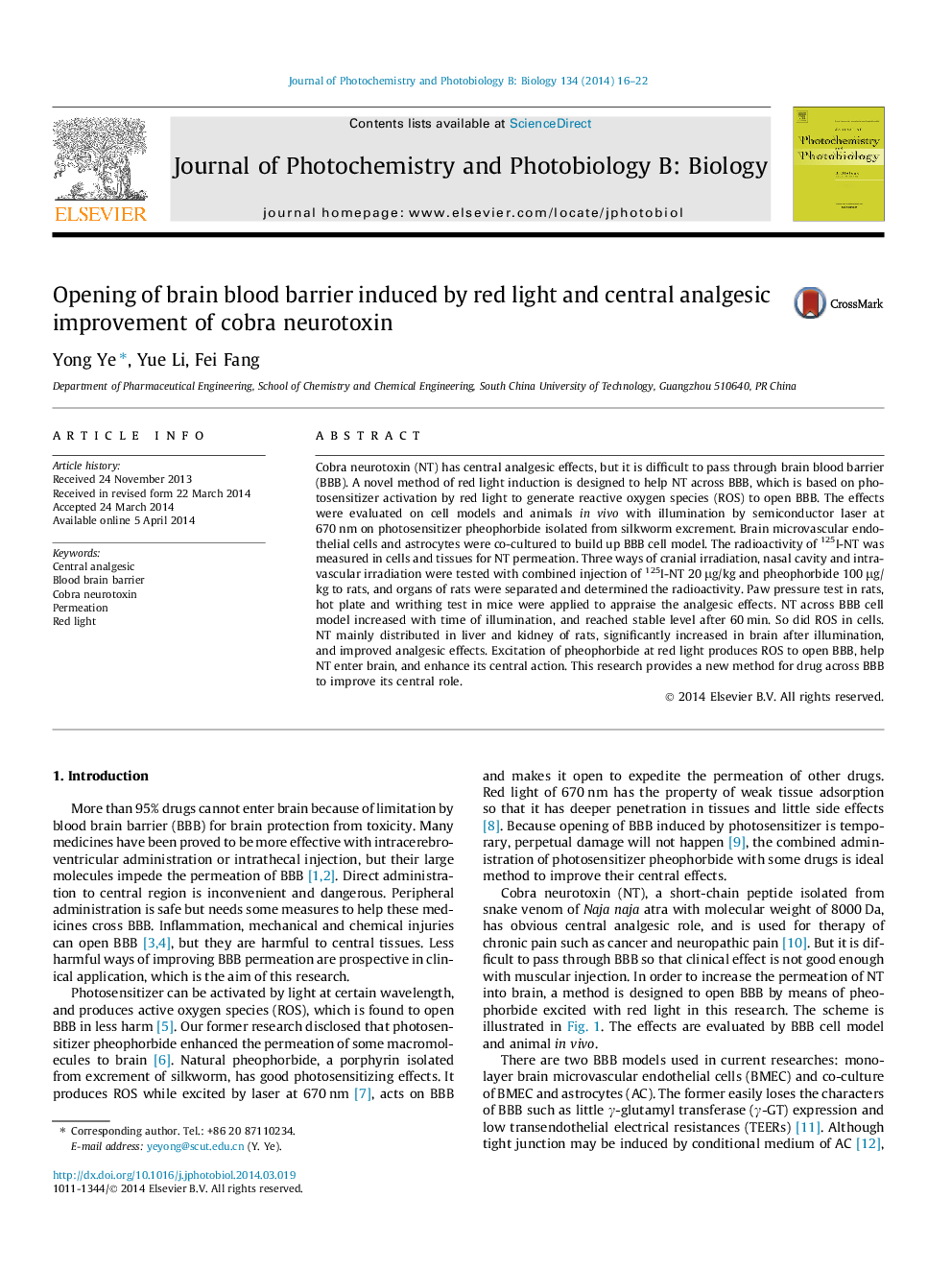| Article ID | Journal | Published Year | Pages | File Type |
|---|---|---|---|---|
| 29406 | Journal of Photochemistry and Photobiology B: Biology | 2014 | 7 Pages |
•Red light can help drug cross brain blood barrier with no harm.•Nasal cavity irradiation enhances BBB permeation in vivo.•Activated photosensitizer produces reactive oxygen species to open BBB.•Central analgesic effects of cobra neurotoxin have been improved.•The illumination and administration have the prospects in clinical use.
Cobra neurotoxin (NT) has central analgesic effects, but it is difficult to pass through brain blood barrier (BBB). A novel method of red light induction is designed to help NT across BBB, which is based on photosensitizer activation by red light to generate reactive oxygen species (ROS) to open BBB. The effects were evaluated on cell models and animals in vivo with illumination by semiconductor laser at 670 nm on photosensitizer pheophorbide isolated from silkworm excrement. Brain microvascular endothelial cells and astrocytes were co-cultured to build up BBB cell model. The radioactivity of 125I-NT was measured in cells and tissues for NT permeation. Three ways of cranial irradiation, nasal cavity and intravascular irradiation were tested with combined injection of 125I-NT 20 μg/kg and pheophorbide 100 μg/kg to rats, and organs of rats were separated and determined the radioactivity. Paw pressure test in rats, hot plate and writhing test in mice were applied to appraise the analgesic effects. NT across BBB cell model increased with time of illumination, and reached stable level after 60 min. So did ROS in cells. NT mainly distributed in liver and kidney of rats, significantly increased in brain after illumination, and improved analgesic effects. Excitation of pheophorbide at red light produces ROS to open BBB, help NT enter brain, and enhance its central action. This research provides a new method for drug across BBB to improve its central role.
Graphical abstractFigure optionsDownload full-size imageDownload as PowerPoint slide
